Notes
Instagram and Murder
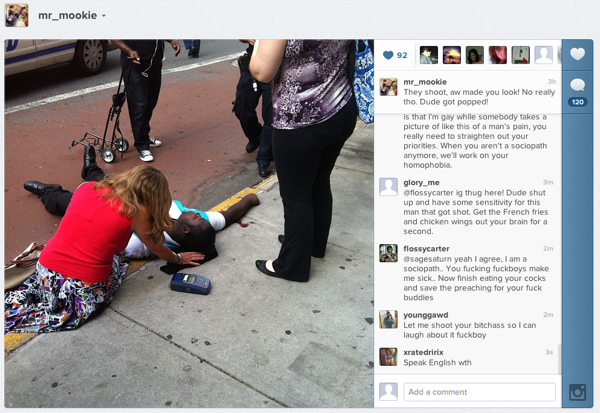
There has been quite a bit of discussion about the Instagram photos of shooting victims at the Empire State Building yesterday, with as much debate on the actual photo threads as off. Much of the discussion involves propriety, with suggestions in media the images were too immediate, too numb, too insensitive.
I don’t think the question of whether the pictures were proper or not, or whether they should have been taken or not really have much relevance though, these reactions largely missing the point of (or the “Insta-” in) Instagram. Instagram is not much about meditation or agenda when it comes to an image, propriety also having more to do with some larger contemplation over whether to record, and then to display. The Instagram experience (more certainly so in yesterday’s circumstances, at least) is, well, much more of a snap, an impulse action. In this case, especially if you read the comments of the user’s themselves, the platform an extension of their own eyes, they were largely just witnessing and reacting (or, more likely, vice-versa).
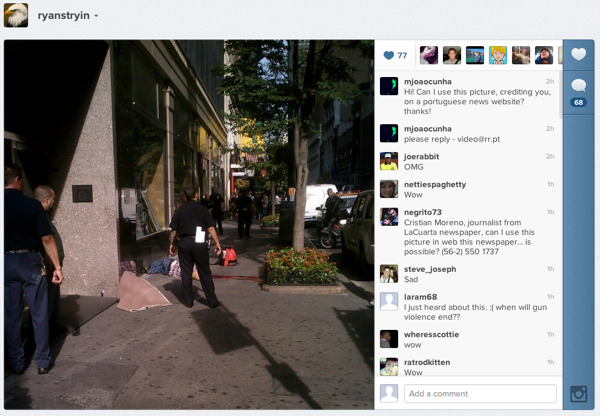
In the case of the two photos I was aware of first, both Instagramers — after posting the shots — sounded not just responsible and unselfconscious, but largely unaware of creating a piece of media or an artifact of cultural significance. The intuitive understanding of Instagram’s largely transitory and ephemeral nature seemed to also insure that this relation toward the imagery might not soon change. Mr_Mookie (Muhammad Malik) explained to NY Mag and Mashable how his initial comment:
“They shoot, aw made you look! No really tho. Dude got popped!”
was written in street vernacular, the first sentence a rap lyric he associates with urban violence which mostly addresses the shock and reality of the moment. As he also told NY Mag, he never thought, even hours later, that what he did/made should accrue him any financial gain (even though half the media world beat a near-instant path to his door/feed). In fact, Malik sounded somewhat put off by the notion, reflecting the Instagram “there for the moment” experience by saying:
“By tomorrow this will all be forgotten. It will be on to the next story.”
In the case of the other Instagramer, Ryan Styrin, his comment in his discussion thread also related how he posted the photo to reflect his experience, although not so spontaneously that he didn’t wait for the cop to move in between him and the body. So there was some mediation there, maybe based on some consideration of how the image would be perceived, but it was still pretty unconscious:
I actually waited for the officer to partially block this view before I took the image. Was this in poor taste? I really don’t think so. This is real life and real life doesn’t give a shit about being tasteful. Neither does NYC. If I have to live here, I can document it however I please.
Confirming the witnessing nature of the moment and the medium, Styrin later replied to his thread:
This was the victim and [I]apologize to his family, but this had to be documented. It was my reality.
As opposed to news photos, or even protest photos taken and distributed via social media, including Instagram, what I appreciate about these pictures, reflecting my appreciation of the platform, is how powerfully free they are of context or agenda. On the other hand, contrast these photos, particularly Styrin’s, with this photo that appeared in the NYT photo gallery capturing the same victim by a man named Sam Gerwitz:
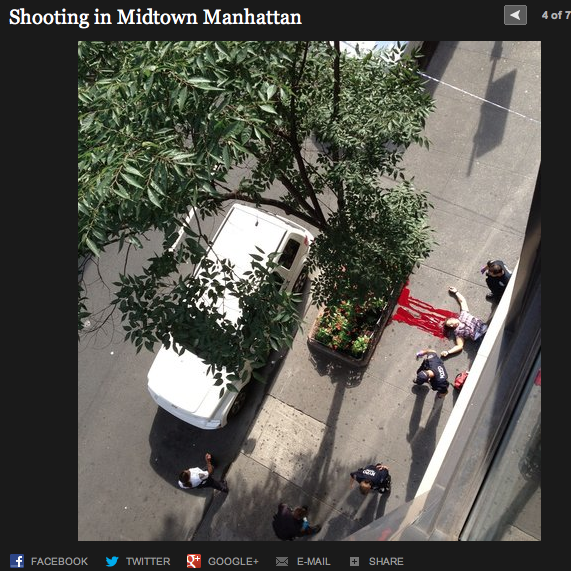
If you read the backstory at OTM, Gerwitz worked in the Empire State Building, was familiar with the shooter and the victim, and was ushered to the window by his co-workers. He also watched the scene for several minutes before deciding to pull out his iPhone. Finally, though he says he didn’t want to do anything with the photo, he did end up offering it to the NYT and got $300 for it.
For my money, at least, the urging of the colleagues; the waiting while watching; and the cognizance of the photo as a commodity all explain why this photo is more sensational and more “craning” than the other two. Honestly, I can’t imagine it on Instagram. It’s just too voyeuristic in a way that it knows it is. As a photo in a digital Grey Lady’s slideshow, on the other hand, it’s certainly seems more at home as a little more graphic, a little more self-conscious and a little more commercial. In other words, it’s more what an editor would decide you should see in contrast to vicariously experiencing an instant and a view — unfiltered, and as random and unpredictable as one moment in life can be — that one person, in that moment, just happened to share.
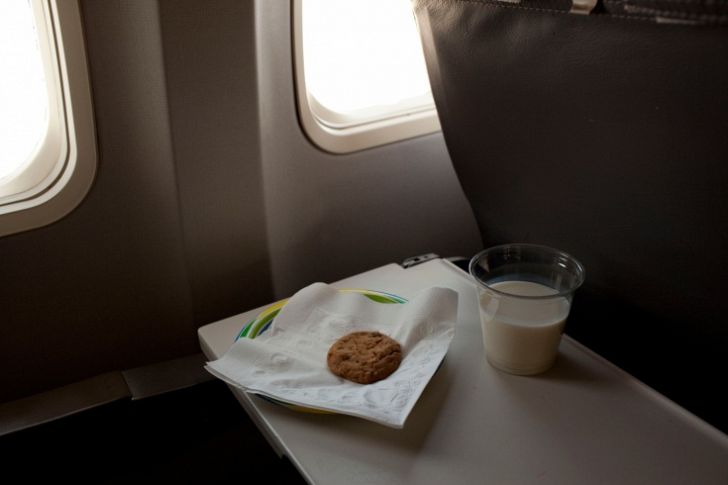
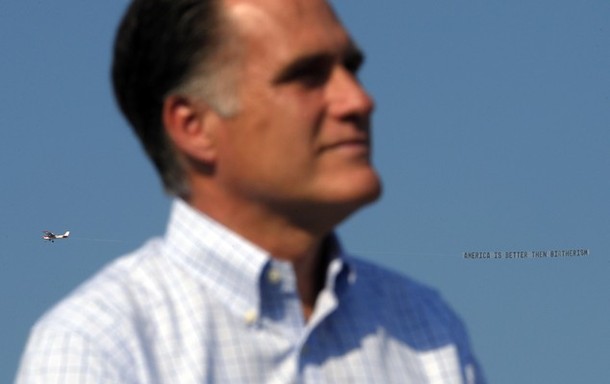
Reactions
Comments Powered by Disqus